3 Creative Boat Prop Cover Ideas for Winter
The cold weather, wind, and snow during the winter can cause significant damage to your boat's propeller. One of the best ways to protect it is by using a boat prop cover. In this article, we'll give you three creative ideas that will keep your propeller safe during the winter months.
One of the easiest and most unique prop cover ideas is a DIY tarp and rope cover. Another is using a simple prop cover made from a piece of foam pipe insulation. If you want a more environmentally friendly approach, you can also repurpose materials to create a boat propeller cover.
Some popular materials that are useful for making boat prop covers include tarps, rope and straps, and PVC pipes. Let's see how these materials can help build creative boat prop covers for winter.
Summary
- The most cost-effective boat prop cover idea is the foam pipe insulation cover, which has an estimated price range of $5 to $20.
- To make a simple boat prop cover from foam pipe insulation, cut a piece of foam pipe insulation to the length of your propeller blades and slide it over.
- Using repurposed materials is a low-cost option that can save you money compared to buying a pre-made cover.
- A DIY tarp and rope cover may not be as durable as a pre-made cover and may need to be replaced more frequently.

On this page:
Below are three creative boat prop cover ideas that will keep your propeller safe during the winter months:
| Cover Type | Pros | Cons | Estimated Price Range |
|---|---|---|---|
| DIY tarp and rope cover | Easy to make and cost-effective | May not provide as much protection as other covers | $10-$30 |
| Repurposed material cover | Environmentally friendly and cost-effective | May not provide as much protection as other covers, may require more effort to make | $5-$50 |
| Foam pipe insulation cover | Easy to make and customizable | May not provide as much protection as other covers, not as durable | $5-$20 |
Create A DIY Tarp and Rope Cover
One of the easiest and most cost-effective ways to cover your boat propeller is to create a DIY tarp and rope cover.

Winter Boat Cover vs. Shrink Wrap & Tarp - What's Best?
Materials needed to make a DIY tarp and rope cover
To make this cover, you will need the following materials:
- Tarp: You will need a tarp that is large enough to cover your propeller with a few extra inches on all sides.
- Rope: You will need a length of rope to tie around the bungee cords and secure the cover in place.
- Bungee cords: You will need a few bungee cords to secure the tarp around the propeller.
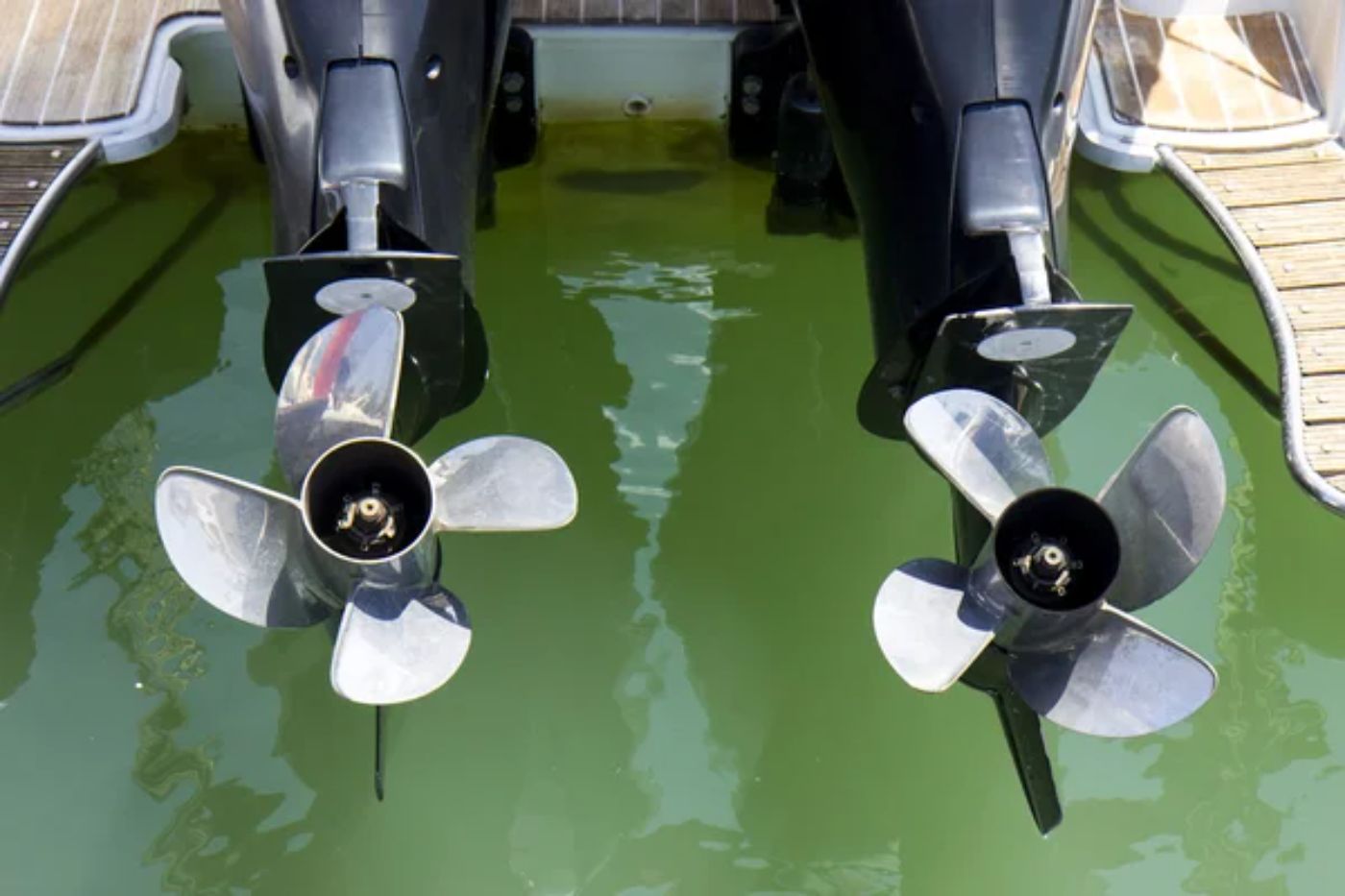
How to make a DIY tarp and rope cover
First, cut the tarp to the size of your propeller, leaving a few extra inches on all sides. Then, use the bungee cords to secure the tarp around the propeller.
Finally, tie the rope around the bungee cords to ensure the cover stays in place. This cover is easy to make and will protect your propeller from the elements.
Pros of a DIY tarp and rope cover
- Cost-effective: Making a DIY tarp and rope cover is much cheaper than buying a pre-made cover. A tarp is up to 60 % less expensive than a specialized boat cover. You can see more tips on how to save when winterizing a sailboat in this article.
- Easy to make: You do not need any special skills or tools to make this cover, making it accessible to anyone.
- Customizable: You can easily adjust the size of the tarp to fit your specific propeller size.
Cons of a DIY tarp and rope cover
- Limited protection: While this cover will protect your propeller from the elements, it may not provide as much protection as a pre-made cover.
- Durability: A DIY tarp and rope cover may not be as durable as a pre-made cover and may need to be replaced more frequently.
- Appearance: This cover may not look as polished or professional as a pre-made cover.
Use Repurposed Materials As Prop Cover
If you're looking for a more eco-friendly option, consider repurposing materials to create a boat propeller cover.
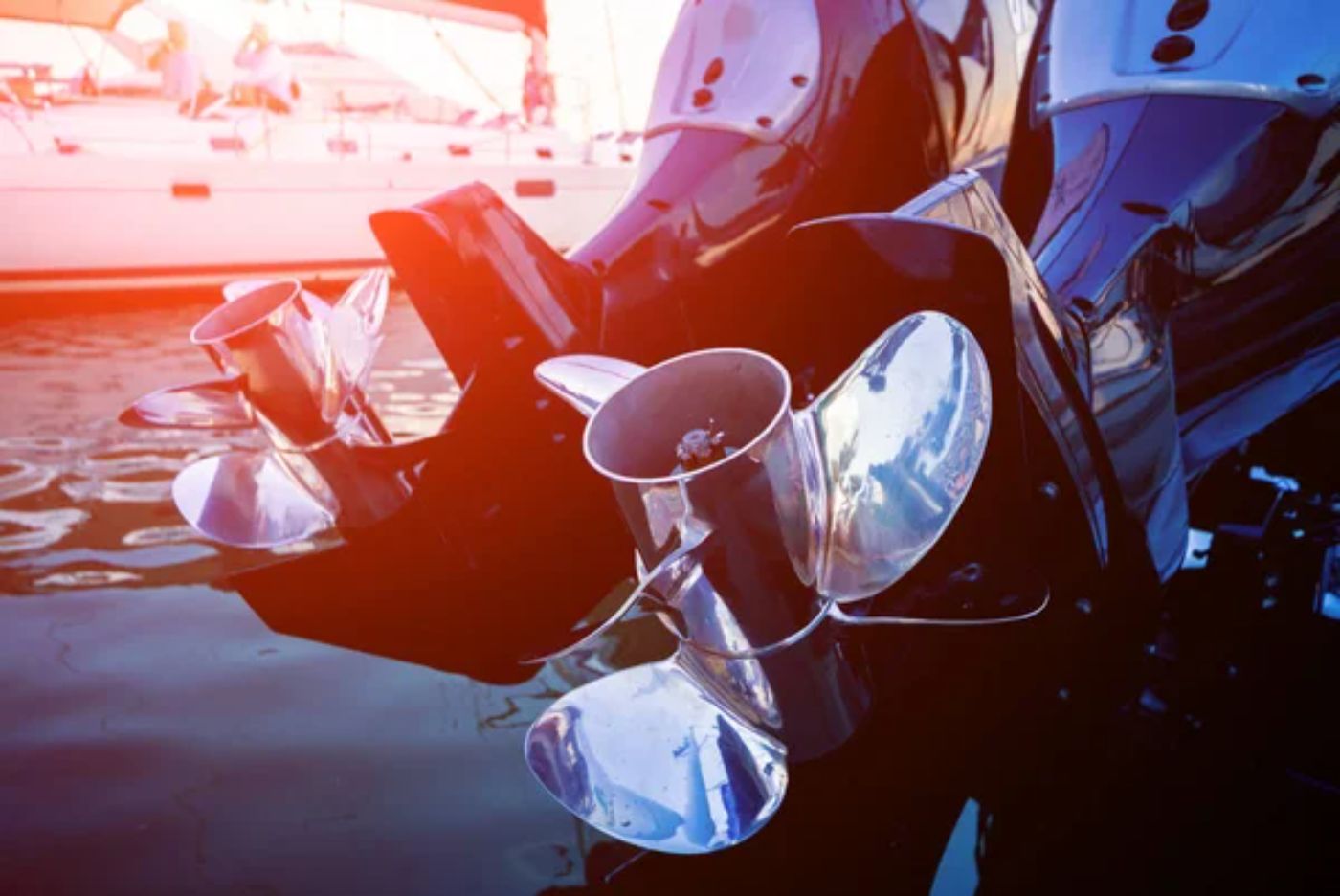
Materials needed
- Repurposed material: You can use an old canvas, tarp, or other materials to create the cover.
- Cutting tools: You will need cutting tools to cut the material to the size of your propeller.
- Bungee cords or ropes: You will need bungee cords or ropes to secure the cover in place.
How to make a repurposed material prop cover
To make this cover, cut the material to the size of your propeller and use bungee cords or ropes to secure it in place. This option is not only eco-friendly, but it's also a great way to repurpose materials that would otherwise go to waste.
Pros of a repurposed material cover
- Eco-friendly: Repurposing materials to create a boat propeller cover is a sustainable option that reduces waste and helps the environment.
- Cost-effective: Using repurposed materials is a low-cost option that can save you money compared to buying a pre-made cover.
- Customizable: You can easily adjust the size and shape of the cover to fit your specific propeller size.
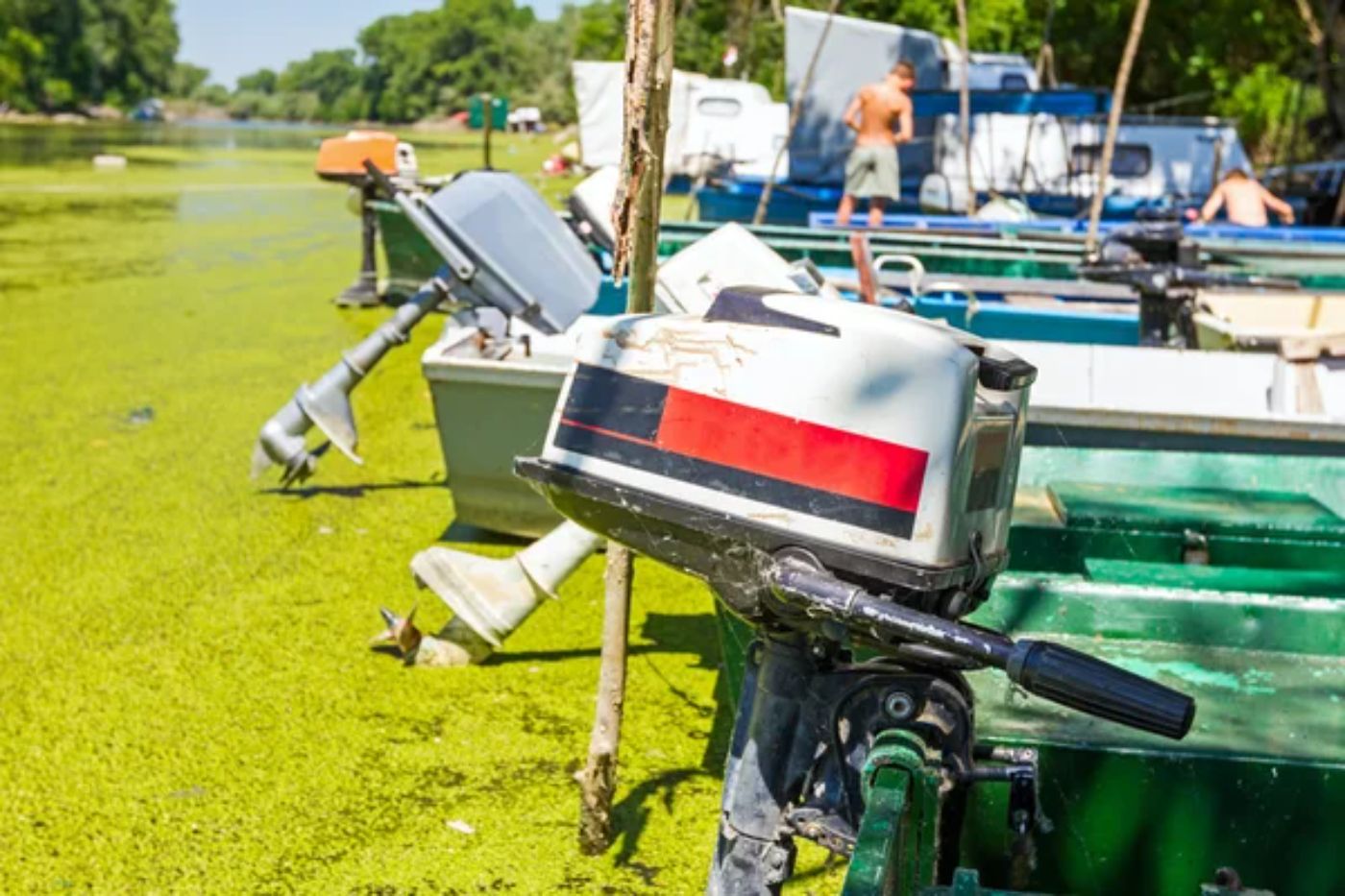
Cons of a repurposed material cover
- Limited protection: A repurposed material cover may not provide as much protection as a pre-made cover, as the materials may not be as durable or waterproof.
- Durability: The cover may not be as durable as a pre-made cover and may need to be replaced more frequently.
- Appearance: This cover may not look as polished or professional as a pre-made cover.
Make A Simple Prop Cover from Foam Pipe Insulation
This type of cover is easy to make and can be customized to fit your specific propeller.
Materials needed
- Foam pipe insulation: You will need a piece of foam pipe insulation that is long enough to cover your propeller blades.
- Cutting tools: You will need cutting tools to cut the foam pipe insulation to the length of your propeller blades.
How to make a simple prop cover from foam pipe insulation
Simply cut a piece of foam pipe insulation to the length of your propeller blades and slide it over the blades. This will help protect your propeller from scratches and other damage during the winter months.
Pros of a foam pipe insulation prop cover
- Cost-effective: Foam pipe insulation is a low-cost option for protecting your propeller.
- Easy to make: You do not need any special skills or tools to make this cover, making it accessible to anyone.
- Customizable: You can easily adjust the size of the foam pipe insulation to fit your specific propeller size.
Cons of a foam pipe insulation prop cover
- Limited protection: While this cover will protect your propeller from scratches and minor damage, it may not provide as much protection as a pre-made cover.
- Durability: Foam pipe insulation may not be as durable as a pre-made cover and may need to be replaced more frequently.
- Appearance: This cover may not look as polished or professional as a pre-made cover.
Other Useful Materials When Making Boat Prop Covers
Aside from the ones mentioned, other popular materials that are useful for making boat prop covers include the following:
| Material | Estimated Cost |
|---|---|
| Bungee cords | $10-20 |
| Ratchet straps | $20-30 |
| Rope | $10-20 |
| PVC pipes | $10-20 |
| PVC connectors | $5-10 |
| Canvas fabric | $50-100 |
| Cotton fabric | $20-50 |
| Grommets | $5-10 |
Rope and straps secure your boat prop cover in place
You can use bungee cords, ratchet straps, or ropes to secure the cover to your boat's hull. Make sure the ropes or straps are strong enough to hold the cover in place, but not so tight that they damage the boat or the cover.
PVC pipes are a great choice for creating a frame for your boat prop cover
You can easily cut PVC pipes to the desired length using a saw or a PVC cutter. Once you have cut the pipes, you can connect them using PVC connectors to create a frame for your cover.
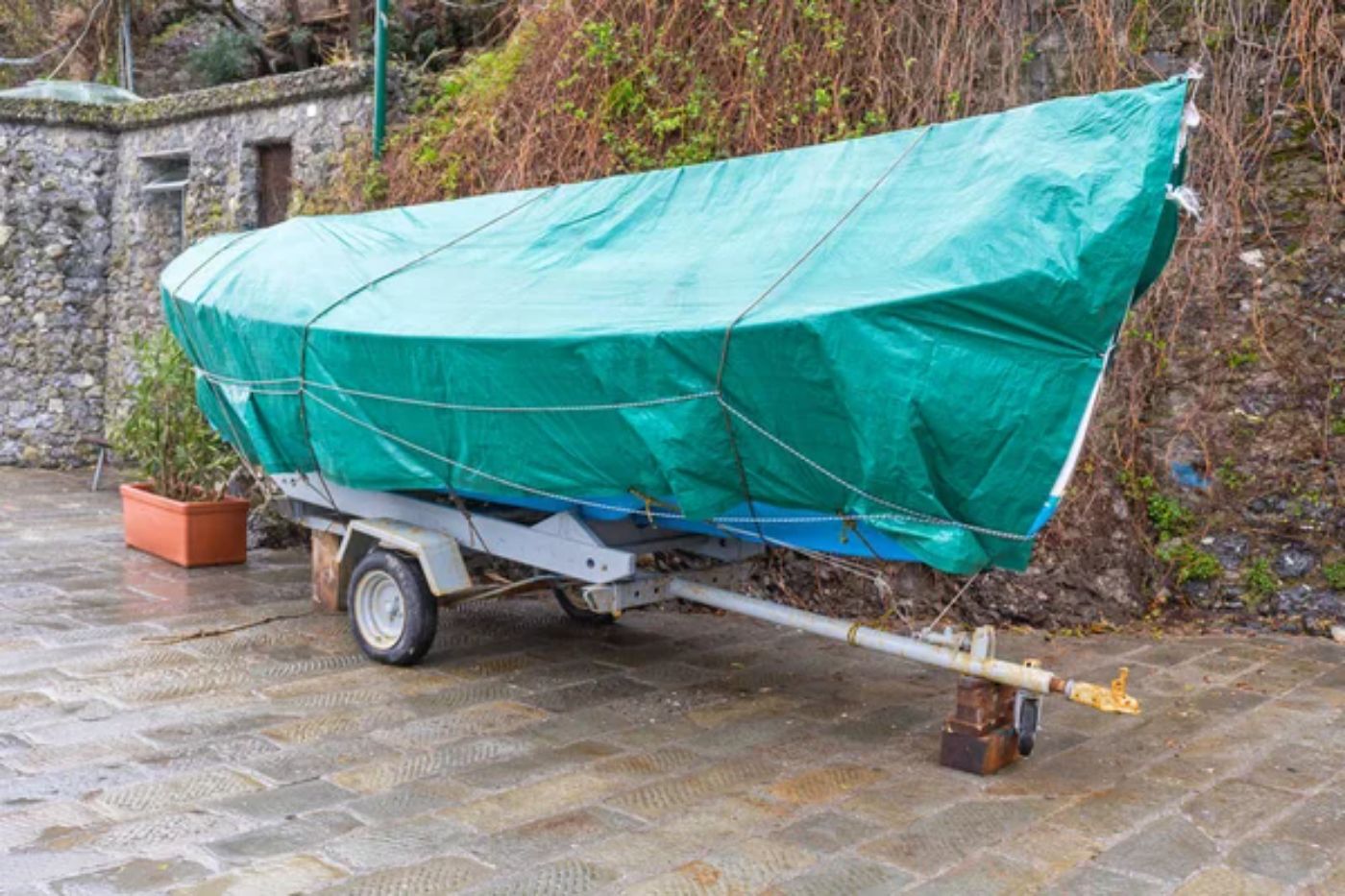
Fabric offers durability for your boat prop cover
When selecting a fabric for your boat prop cover, perhaps consider the conditions that your boat will be exposed to. If you'll be boating in saltwater, for example, you'll want a fabric that can resist corrosion and salt damage.
- Canvas is a popular choice for boat prop covers because it is made from heavy-duty cotton or polyester and can be treated to resist water, mildew, and UV damage. It's also easy to clean and can be painted to match your boat's color.
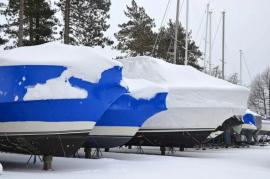
What's the Best Material for Winter Boat Covers?
- Cotton is another option, but it is not as durable as canvas and may not hold up as well over time. It's also more prone to water damage and mildew growth. However, cotton is a more breathable fabric, which can be beneficial if you're using your boat in warmer climates.
Grommets are used to reinforce the holes you make in the fabric
When making a boat prop cover, it is common to add grommets to the fabric to create secure attachment points for the cover.
The grommets help to prevent the fabric from tearing or fraying around the holes where the cover is attached to the boat. This helps to ensure that the cover will last longer and provide effective protection for the boat's propeller.
Did you find the answer to your specific question?
👍 0 👎 0

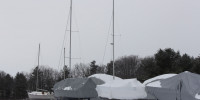


Leave a comment